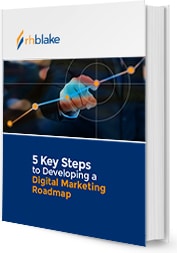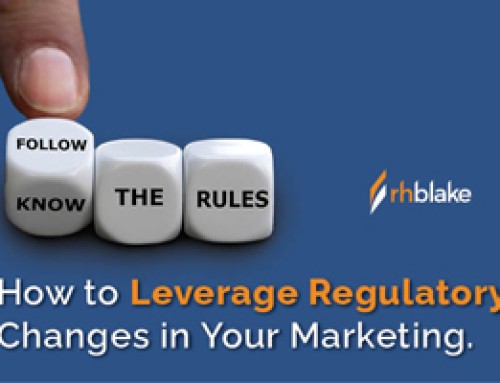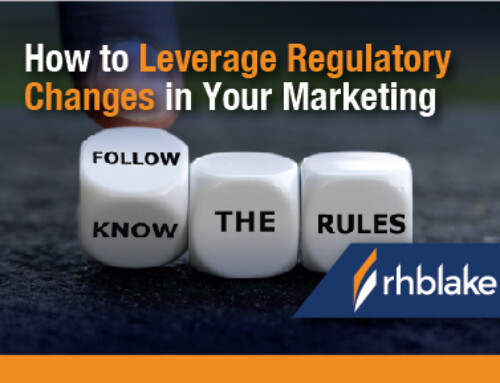Don’t Take Status Quo for an Answer
Written by Dan Konstantinovsky
Strategic Marketing, RH Blake
![]()

B2B manufacturing companies that market long sales-cycle offerings, particularly complex ones that challenge the status quo, often leave out a critical selling point in their marketing materials – addressing their target customer’s risk of NOT making a purchase decision.
In other words, you’re not just selling against your conventional competitors or the supplier who currently has their business. You’re also competing against inaction … or the customer making no supplier decision at all.
Too often we as marketers get caught up in the tangible selling points of bigger, faster, stronger, more efficient, more productive, less cost, less waste, etc. The better marketers even hit the “what’s in it for me” angle from the customer’s perspective. But many times, we fall short of acknowledging the various forms of risk the customer is facing as they consider the purchase. We miss out on the opportunity to help clear them of those mental hurdles.
Risk is causing nearly 6 out of 10 complex, high-stakes buying decisions to end with the customer concluding that the easiest (if not always necessarily the safest) thing to do is to simply stick with the status quo (source: Sales Benchmark Index). That’s not acceptable. We need to change that mindset.
Making things even more challenging, the more expensive and impactful of a solution you’re selling, the more likely that “risk” is your top competitor blocking you from making the sale.
Don’t Take Status Quo for an Answer
Written by Dan Konstantinovsky
Strategic Marketing, RH Blake
![]()

B2B manufacturing companies that market long sales-cycle offerings, particularly complex ones that challenge the status quo, often leave out a critical selling point in their marketing materials – addressing their target customer’s risk of NOT purchasing.
In other words, you’re not just selling against your conventional competitors or the supplier who currently has their business. You’re also competing against inaction … or the customer making no purchase at all.
Too often we as marketers get caught up in the tangible selling points of bigger, faster, stronger, more efficient, more productive, less cost, less waste, etc. The better marketers even hit the “what’s in it for me” angle from the customer’s perspective. But many times, we fall short of acknowledging the various forms of risk the customer is facing as they consider the purchase. We miss out on the opportunity to help clear them of those mental hurdles.
Risk is causing nearly 6 out of 10 complex, high-stakes buying decisions to end with the customer concluding that the easiest (if not always necessarily the safest) thing to do is to simply stick with the status quo (source: Sales Benchmark Index). That’s not acceptable. We need to change that mindset.
Making things even more challenging, the more expensive and impactful of a solution you’re selling, the more likely that “risk” is your top competitor blocking you from making the sale.
Define “complex sale”
By complex sale, we’re talking about a purchase that is intended to make a significant change to the buyer’s business. Unlike transactional purchases that typically have a repeatable process, these are purchases that impact processes, behavior, culture and outcomes across the business or enterprise.
Here, the product or service Is viewed as a strategic decision that has to be thoughtfully considered. It typically involves multiple stakeholders and has to progress through various phases before a decision or direction can be confirmed.
There’s inherent risk for the individuals involved in the buying decision on these types of purchases, and it benefits marketers to know more about the drivers of this risk.
3 types of risk driving your customer’s mindset
Risk can be broken down into three categories: personal, professional and business.

Personal
If your target customer makes the wrong decision, how will this impact how they feel about their career? How could this impact their family?

Professional
If your target customer makes the wrong recommendation, how will it impact their reputation in the industry? How will it impact their job security and trajectory? How will it impact their influence within the company and within the industry moving forward?

Business
If your target customer makes the wrong decision, how will it impact their department, their organization, their bottom line, their shareholder value, etc.?
Communicating the cost of inaction
To minimize risk across these categories, leading industrial and manufacturing marketers are focusing on creating marketing programs and content that effectively communicate the implications and costs of inaction.
In essence, industrial and manufacturing marketers must help their potential buyers answer two important questions:
- Why is it important for me to address this problem?
- Why should I address it now?
Then B2B marketers must create content that addresses these concerns head-on. Think visually. Keep your messaging straightforward and easy-to-follow. For example:
Quantitative
The “calculator” graphic.
 Develop a visual demonstrating the financial benefit of your solution. Extrapolate out that savings over a meaningful timeframe. Let’s say your solution provides a cost savings benefit of $10,000 per month. Create a visual that conveys this.
Develop a visual demonstrating the financial benefit of your solution. Extrapolate out that savings over a meaningful timeframe. Let’s say your solution provides a cost savings benefit of $10,000 per month. Create a visual that conveys this.Qualitative
The “What if?” Infographic.
Quantitative and Qualitative
The “iceberg” image.
 Create content that incorporates your solution benefits along with the non-financial benefits for your customer contact.
Create content that incorporates your solution benefits along with the non-financial benefits for your customer contact.Address the risk of maintaining the status quo
Creating meaningful content that specifically addresses the risk facing your potential buyer is an excellent way to compel them to take action. Help them overcome that risk by first acknowledging it, and then clearly communicate to them how maintaining the status quo is an even greater risk.









